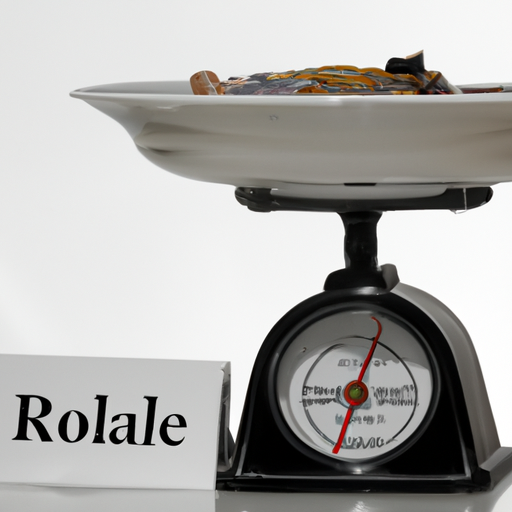The Benefits of a Low-Glycemic Diet
Most of us know the feeling of having a blood sugar crash after a sugary snack. The good news is that there’s a way to avoid this and still enjoy the foods you love: the low-glycemic diet.A low-glycemic diet focuses on choosing foods that have minimal effect on your blood sugar levels. This means avoiding processed and refined carbs and opting for nutritious, high-fiber foods like fruits, vegetables, whole grains and legumes. The result? Improved blood sugar control, lower risk of diabetes and heart disease, and decreased inflammation!
Not only is it great for health, but a low-glycemic diet can also help you lose weight more effectively. By limiting your intake of simple sugars, you’ll experience less hunger and cravings, and better satiety levels, which makes it easier to stick to a healthy diet.
Health Benefits
As a low-glycemic dieter, I’m constantly looking for ways to improve my health. And I’m always happy when I find out that eating certain foods can provide me with powerful benefits. Here’s what I’ve learned about the health benefits of sticking to a low-glycemic lifestyle.
For starters, having better control over your blood sugar can do wonders in the long run. Eating low-glycemic foods helps you regulate your glucose levels, so you won’t have to worry about sudden spikes or dips throughout the day. Plus, this type of dieting has been linked to a lower risk of diabetes and heart disease. What’s not to love?
I’ve also noticed an overall decrease in inflammation when I stick to a low-glycemic lifestyle. Since I avoid refined carbs like white bread and sugary snacks, my body feels a lot more at ease. With less stress on my digestive system, I’m living a much healthier life. Can’t ask for much more than that!
Weight Loss Benefits
Gettin’ fit can be a struggle, ya know? But if you’re lookin’ to shed those last ten pounds, why not start by adopting a low-glycemic diet? You’ll be glad you did, ’cause it’s all the rage these days.

Turns out, eating low-glycemic foods helps reduce hunger and cravings, and also provides that sweet feeling of being full for longer stretches of time. That means less snacking in between meals (and more money saved on snacks!), and better weight loss results overall.
Low-glycemic foods also have other benefits—like improved blood sugar control and better insulin sensitivity, both of which are major keys to diet and health success. Plus, they can help reduce inflammation, another cause of weight gain.
If you’re looking to make the switch to a low-glycemic diet, here’s a few tips to get you rollin’: First, include plenty of high-fiber foods like oats, beans, apples, and avocado, which can help reign in hunger levels and keep your tummy satisfied longer. And while you’re at it, try to stay away from processed or refined carbs, and opt for healthy fats instead. Finally, break up your meals into smaller portions spread out throughout the day!
Practical Tips for Eating Low Glycemic
It can be downright confusing to figure out what eating low-glycemic actually entails. I mean, what’s a low-glycemic food exactly? Do you need to count carbs and gobs of other tedious stuff? Well, here are some tips to get ya started.
First off, it’s best to avoid processed and refined carbs that jumpstart your blood sugar—think white breads and pasta, sugary cereals and snacks, and even sweet fruits like mangos and pineapple. Instead, opt for high-fiber options such as whole grains, legumes, and veggies since they take longer to digest and prevent wild spikes in your glucose levels.
Choose the right fats too—not all fats are created equal. While trans fat should be avoided, monounsaturated fats from such sources as nuts, avocados, and olive oil have been linked to improved blood sugar control.
Eat smaller meals more frequently too—it can be helpful to space out your eating so that you don’t become famished and make poor choices. After all, eating fewer bigger meals can make your blood sugar go crazy!
All in all, following a low-glycemic diet can be done with a little bit of savvy planning. And if you keep these tips in mind, you’ll find yourself on track to better health in no time.
Conclusion
Wrapping it all up, the low-glycemic diet is a smart way to go if you’re looking to make some positive changes in your health and weight. Eating high-fiber foods, avoiding processed and refined carbs, choosing the right fats and eating smaller meals more frequently are all key aspects of cutting down on those sugary spikes. It’s a great way to get back on track, especially if you feel you’ve been caught in a cycle of cravings. All in all, it’s a fantastic way to boost your energy and keep your blood sugar levels under control.
Low-Glycemic Diet FAQ
What are the benefits of glycaemic?
When it comes to nutrition, the low-glycaemic diet is gaining in popularity. I’m sure you’ve heard of it – the idea is to limit foods that cause sudden spikes in your blood sugar, while fueling your body with those that provide sustained energy. But did you know that the benefits of a low-glycaemic diet go far beyond just helping you control your weight?
There are lots of potential benefits to a low-glycaemic diet, including reducing your risk of type 2 diabetes, heart disease, and even some cancers. It can also help improve your energy levels and even help you sleep better!
But let’s focus on one particular benefit – controlling your blood sugar levels. With a low-glycaemic diet, you’ll be consuming foods that don’t cause sudden spikes in your blood sugar. Instead, your blood sugar levels will remain steady, avoiding the roller-coastering highs and lows that can make it difficult to manage your diabetes or just feel healthier overall.
Furthermore, this type of diet also helps you get more of the essential vitamins, minerals and phytonutrients that your body needs. And because you’re not eating refined carbohydrates, you’ll be avoiding the processed ingredients that can be hard on your digestive system.
In short, the benefits of a low-glycaemic diet are numerous. From reducing your risk of certain diseases to improving your energy levels and overall health, it’s clear that this type of diet can do a lot of good. So if you’re looking to make some changes to your diet and lifestyle, you may want to consider a low-glycaemic diet. You could be pleasantly surprised at the positive results!
Are all low glycemic foods healthy?
Well, folks, it’s not all bright and sunny when it comes to low glycemic diets. You see, the thing about a low glycemic diet is that, while it can be beneficial for some people, it’s important to be smart about which foods you choose. Sure, some low glycemic foods are healthy, like some fruits, vegetables, and whole grains. However, there are also some sweeteners, starches, and processed foods that are low glycemic, but not so great for you either.
For example, some artificial sweeteners can be low glycemic, but they can also contain chemicals and other additives that aren’t so great for your body. And while certain starches can have a lower glycemic index, they may also contain more unhealthy fats and calories than healthier alternatives. Plus, some processed and packaged foods can be low glycemic, but they can also contain a lot of preservatives and other unhealthy ingredients.
Bottom line: if you’re going to go for a low glycemic diet, it’s best to do your research and make sure you’re choosing healthy options. Stick with natural foods like fruits, vegetables, and whole grains and try to avoid sugary drinks, sweeteners, starches, and processed foods as much as possible. That way, you’ll be sure to get all the health benefits of a low glycemic diet—without all the negative side effects.






